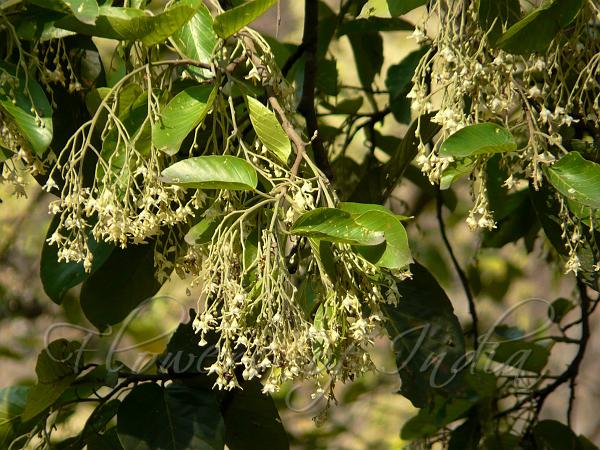|
| Sal |
|

|

| File size | 842989 |
| Original date | 4/11/09 10:02 AM |
| Resolution | 2560 x 1920 |
| Flash | Flash did not fire, auto |
| Focal length | 82.8mm |
| Exposure time | 1/250s |
| Aperture | 4.2 |
| Focus Distance | |
| Metering Mode | Multi-segment |
| Camera make | Panasonic |
| Camera model | DMC-FZ18 |
| Sensor type | OneChipColorArea |
|
|
|
|
Photo: |
Botanical name: Shorea robusta Family: Dipterocarpaceae (Sal family)
Synonyms: Dryobalanops robusta
Synonyms: Dryobalanops robusta
Sal is moderate to slow growing tree, which can grow
up to 30-35 m tall, with a trunk diameter of up to 2-2.5 m. The bark of
the young tree is smooth with a few long deep and vertical furrows. The
leaves are ovate-oblong, 10-25 cm long and 5-15 cm broad. In wetter
areas, it is evergreen; in drier areas, it is dry-season deciduous,
shedding most of the leaves in between February to April, leafing out
again in April and May. The sal flowers, whitish in color, appear in
early summer. These are borne in raceme-like panicles in leaf axils,
covered with white pubescence.
In Buddhist tradition, it is said that Guatama Buddha was born under the
branches of this tree while his mother was en route to birth him in his
grandfather's kingdom. Sal is one of the most important sources of
hardwood timber in India, with hard, coarse-grained wood that is light in
colour when freshly cut, and becoming dark brown with exposure. The wood
is resinous and durable, and is sought after for construction, although
not well suited to planing and polishing. Sal trees are found from Burma
in the East, to Assam, Bengal, Nepal, the Deccan Plateau, going up to the
foothills of the Shivaliks on the left bank of the Yamuna river.
Flowering: April-May.
| Identification credit: Tabish | Photographed in Malli, Darjeeling distt. |
• Is this flower misidentified? If yes,